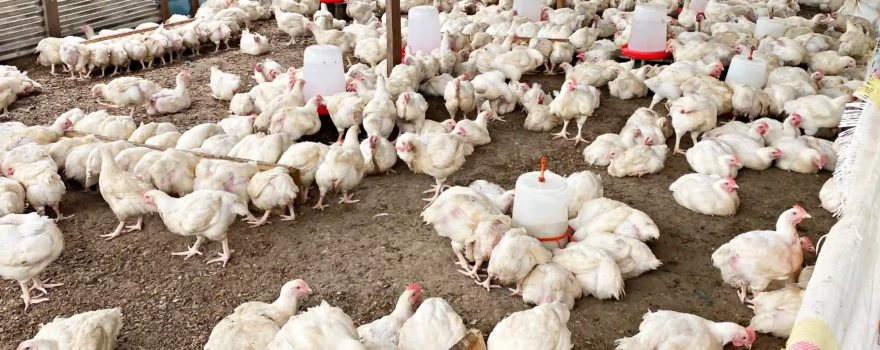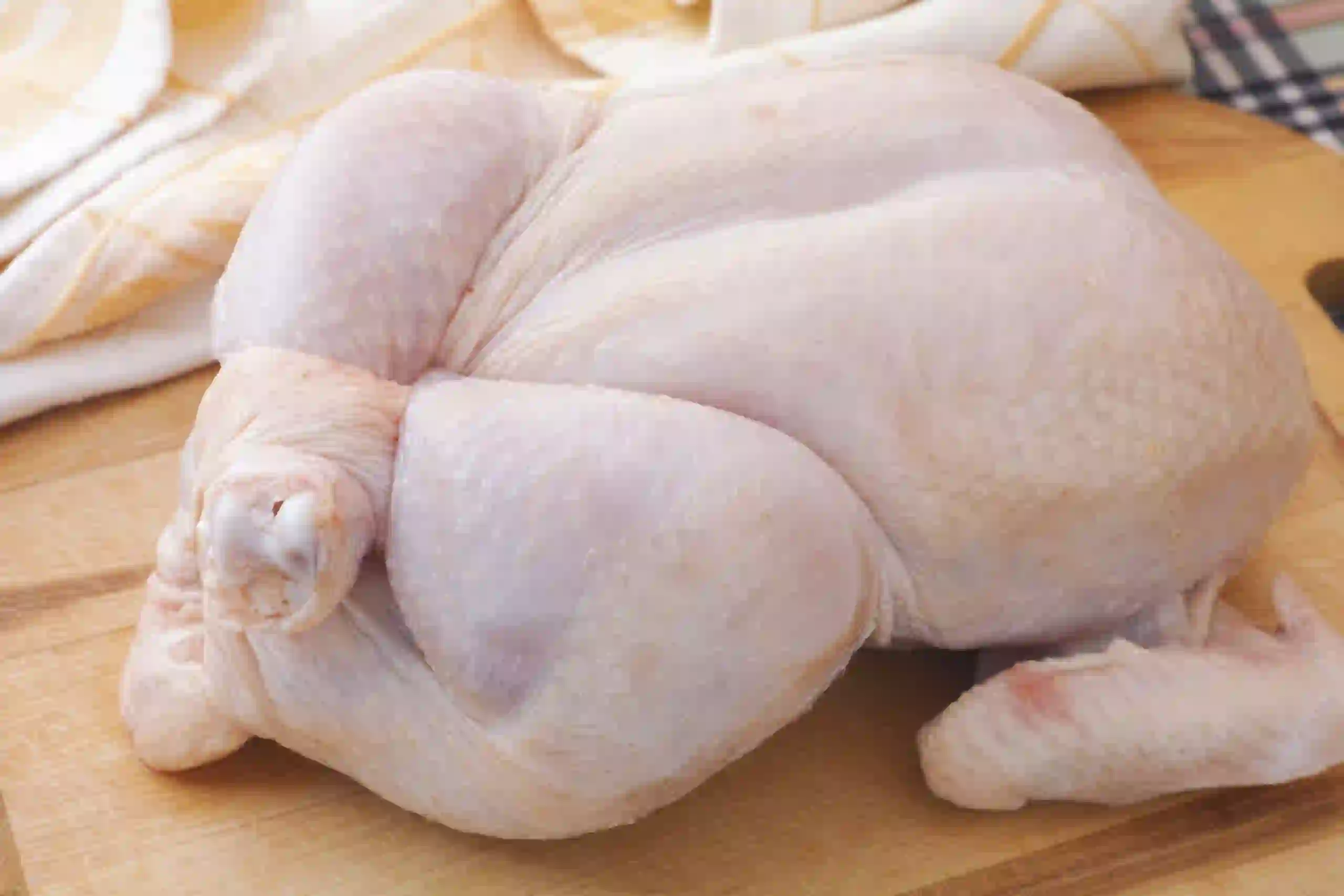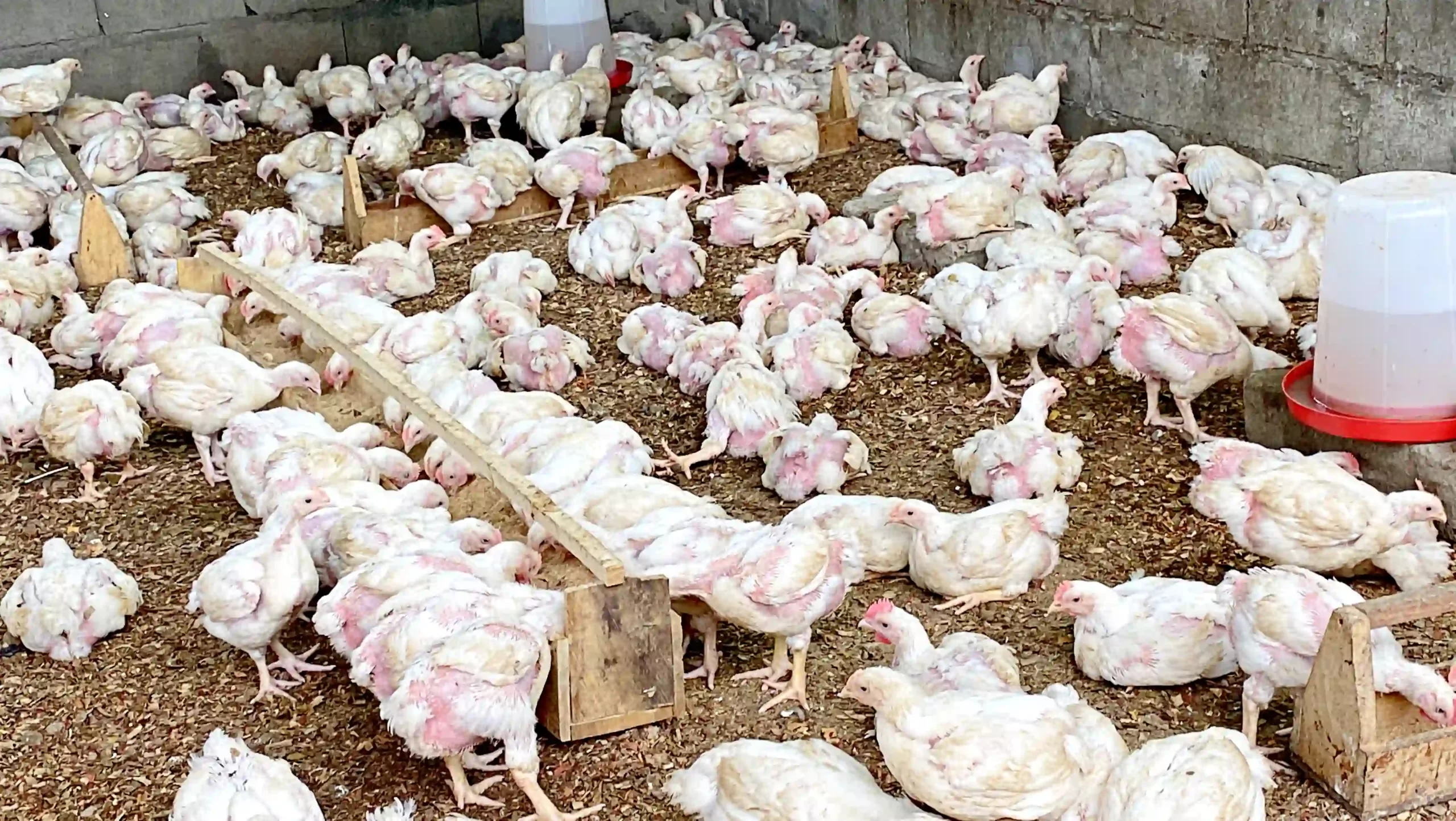
What are Broiler Chickens?
If you’re new to poultry farming, you might be wondering what exactly Broiler Chickens are. Broilers are a type of chicken that is raised specifically for meat production. They are typically a fast-growing breed of chicken that can be ready for processing in as little as 6-8 weeks. In this blog post, we’ll take a closer look at broilers and answer some common questions about them.
Characteristics of Broilers
Broilers are known for their specific characteristics that make them ideal for meat production. Here are some of the key traits of broilers:
- Fast growth: Broilers are bred to grow quickly, which means they can reach their processing weight in a relatively short amount of time.
- Large size: Because broilers are raised for meat production, they are typically larger than other breeds of chicken.
- Efficient feed conversion: Broilers are known for their efficient feed conversion, which means they can convert their feed into meat at a high rate.
- Docile temperament: Broilers are typically docile and easy to handle, which makes them easier to manage in large-scale farming operations.
How are Broilers Raised?
Broilers are typically raised in large-scale farming operations where they are housed in temperature-controlled barns. Here are some of the key steps involved in raising broilers:
- Day-old chicks are purchased from a hatchery and brought to the farm.
- The chicks are housed in brooder houses for the first few weeks of their life, where they are kept warm and provided with feed and water.
- As the chicks grow, they are moved to larger grow-out houses where they have more room to move around.
- The broilers are fed a high-protein diet that is specifically formulated to promote rapid growth and efficient feed conversion.
- After 6-8 weeks, the broilers are ready for processing.
Benefits of Raising Broilers
There are several benefits to raising broilers for meat production. Here are a few:
- Quick turnaround: Broilers can be ready for processing in as little as 6-8 weeks, which means farmers can have a quick turnaround time for their products.
- High demand: Chicken is one of the most popular meats in the world, which means there is a high demand for broilers.
- Efficient feed conversion: Broilers are known for their efficient feed conversion, which means farmers can save money on feed costs.
- Profitable: Raising broilers for meat production can be a profitable business for farmers.
Broilers are a specific breed of chicken that is raised for meat production. They are known for their fast growth, large size, efficient feed conversion, and docile temperament. Broilers are typically raised in large-scale farming operations and can be ready for processing in as little as 6-8 weeks. If you’re considering poultry farming for meat production, broilers might be a good option to consider.
Types of Chicken Breeds for Meat Production
If you’re looking to get into the poultry farming business, it’s important to know that not all chicken breeds are created equal. While some breeds are better suited for egg-laying, others are specifically raised for meat production. In this blog post, we’ll take a closer look at the different types of chicken breeds that are commonly raised for meat production, and their respective characteristics.
Broiler Chickens

Broilers are the most common breed of chicken raised for meat production. Here are some of their key characteristics:
- Fast growth: Broilers are bred to grow quickly and can reach processing weight in as little as 6-8 weeks.
- Large size: Broilers can grow to be quite large, with some breeds reaching up to 10 pounds.
- Efficient feed conversion: Broilers are known for their efficient feed conversion and can convert feed into meat at a high rate.
- Docile temperament: Broilers are generally docile and easy to handle, which makes them easier to manage in large-scale farming operations.
Cornish Cross Chickens
Cornish Cross chickens are another popular breed for meat production. Here are some of their key characteristics:
- Rapid growth: Cornish Cross chickens are bred for their fast growth and can reach processing weight in as little as 6-7 weeks.
- Large size: Cornish Cross chickens are known for their large size and can weigh up to 12 pounds.
- High feed consumption: Cornish Cross chickens have a high feed consumption rate, which means they require more feed than other breeds.
- Tender meat: The meat of Cornish Cross chickens is known for its tenderness and mild flavor.
Freedom Rangers
Freedom Rangers are a slower-growing breed of chicken that is becoming more popular for meat production. Here are some of their key characteristics:
- Flavorful meat: Freedom Ranger meat is known for its rich, flavorful taste.
- Better foragers: Freedom Rangers are known for their foraging abilities and are better suited for free-range farming.
- Smaller size: Freedom Rangers are smaller than other meat breeds and typically reach processing weight in 9-11 weeks.
- Efficient feed conversion: While not as efficient as broilers, Freedom Rangers are still relatively efficient at converting feed into meat.
Dual-Purpose Breeds
Dual-purpose breeds are a type of chicken that can be raised for both meat and egg production. While they are not as efficient at converting feed into meat as broilers or Cornish Cross chickens, they are still a popular choice for small-scale farmers. Some common dual-purpose breeds include:
- Rhode Island Red: This breed is known for its hardiness and is a popular choice for backyard farmers.
- Plymouth Rock: Plymouth Rocks are a dual-purpose breed that is known for its calm temperament and ability to lay eggs in the winter.
- Sussex: Sussex chickens are known for their good foraging abilities and are a popular choice for free-range farming.
Choosing the right breed of chicken for meat production is an important decision for any poultry farmer. Broilers and Cornish Cross chickens are the most common breeds raised for meat production, while Freedom Rangers and dual-purpose breeds offer a slower-growing, more flavorful alternative. Consider the specific characteristics of each breed before making your decision, and choose the breed that best suits your farming operation.
Most Popular Breed Ross 308 and Cobb 500 breeds of chickens:
Ross 308
The Ross 308 is a popular breed of chicken that is commonly used for meat production. Here are some of its key characteristics:
- Fast growth: Ross 308 chickens are known for their fast growth rate and can reach processing weight in as little as 6-8 weeks.
- Large size: Ross 308 chickens can grow to be quite large, with some birds reaching up to 10 pounds.
- High feed efficiency: Ross 308 chickens are known for their efficient feed conversion, which means they require less feed to produce more meat.
- Docile temperament: Ross 308 chickens are generally docile and easy to handle, which makes them easier to manage in large-scale farming operations.
The Ross 308 is a cross between several breeds, including the Cobb 500, and was developed specifically for meat production. It is a popular choice for commercial poultry farmers due to its fast growth rate and high feed efficiency.
Cobb 500
The Cobb 500 is another popular breed of chicken that is used for meat production. Here are some of its key characteristics:
- Fast growth: Cobb 500 chickens are bred to grow quickly and can reach processing weight in as little as 6-7 weeks.
- Large size: Cobb 500 chickens can grow to be quite large, with some birds reaching up to 10 pounds.
- Efficient feed conversion: Cobb 500 chickens are known for their efficient feed conversion, which means they require less feed to produce more meat.
- Robust health: Cobb 500 chickens are bred to be robust and healthy, which helps to minimize disease and mortality rates.
Like the Ross 308, the Cobb 500 is a crossbreed that was developed specifically for meat production. It is a popular choice for commercial poultry farmers due to its fast growth rate, high feed efficiency, and robust health.
Comparison
While both the Ross 308 and Cobb 500 are popular breeds of chickens used for meat production, there are some differences between the two. Here are some of the key differences:
- Growth rate: The Ross 308 has a slightly slower growth rate than the Cobb 500, taking 6-8 weeks to reach processing weight compared to the Cobb 500’s 6-7 weeks.
- Temperament: While both breeds are generally docile and easy to handle, some farmers report that the Ross 308 is slightly more aggressive than the Cobb 500.
- Parentage: The Ross 308 is a cross between several different breeds, while the Cobb 500 is a cross between two specific breeds (the Cobb 700 and Cobb 550).
Ultimately, the choice between the Ross 308 and Cobb 500 will depend on the specific needs and preferences of the poultry farmer. Both breeds are well-suited for meat production and offer fast growth rates and efficient feed conversion.
Cornish Cross
The Cornish Cross is a hybrid breed of chicken that is commonly used for meat production. Here are some of its key characteristics:
- Rapid growth: Cornish Cross chickens are bred to grow quickly and can reach processing weight in as little as 6-8 weeks.
- Large size: Cornish Cross chickens can grow to be quite large, with some birds reaching up to 14 pounds.
- High feed efficiency: Cornish Cross chickens are known for their efficient feed conversion, which means they require less feed to produce more meat.
- Health issues: Cornish Cross chickens are prone to certain health issues due to their fast growth rates and large sizes, such as leg problems and heart failure.
Freedom Ranger
The Freedom Ranger is a breed of chicken that is popular among small-scale and backyard farmers. Here are some of its key characteristics:
- Slower growth: Freedom Ranger chickens take longer to reach processing weight than some other breeds, typically around 9-11 weeks.
- High-quality meat: Many people prefer the taste and texture of meat from Freedom Ranger chickens compared to other breeds.
- Active lifestyle: Freedom Ranger chickens are known for being active and foraging well, which can lead to better quality meat and eggs.
- Heat tolerance: Freedom Ranger chickens are well-suited for hot climates and can tolerate heating better than some other breeds.
Jersey Giant
The Jersey Giant is a breed of chicken that is known for its large size and flavorful meat. Here are some of its key characteristics:
- Large size: Jersey Giant chickens are one of the largest breeds, with some birds reaching up to 15 pounds.
- Slow growth: Jersey Giants take longer to reach processing weight than some other breeds, typically around 16-18 weeks.
- Dual-purpose: While Jersey Giants are primarily used for meat production, they can also be used for egg production.
- Calm temperament: Jersey Giants are generally calm and docile, which makes them easy to handle.
There are many breeds of chickens that are used for meat production, each with its own unique characteristics and benefits. Whether you choose a fast-growing hybrid breed like the Cornish Cross or a slower-growing heritage breed like the Jersey Giant, it’s important to choose a breed that is well-suited for your specific needs and farming operation.
here is a table comparing some of the key characteristics of the Ross 308, Cobb 500, Cornish Cross, Freedom Ranger, and Jersey Giant breeds:
| Breed | Growth Rate | Size | Feed Efficiency | Health Issues | Temperament | Primary Use |
|---|---|---|---|---|---|---|
| Ross 308 | Fast (6-8 wk) | Large (up to 10 lb) | High | None | Docile | Meat Production |
| Cobb 500 | Fast (6-7 wk) | Large (up to 10 lb) | High | None | Docile | Meat Production |
| Cornish Cross | Rapid (6-8 wk) | Large (up to 14 lb) | High | Leg problems, heart failure | Docile | Meat Production |
| Freedom Ranger | Slow (9-11 wk) | Medium (4-6 lb) | High | None | Active, forages well | Meat and Egg Production |
| Jersey Giant | Slow (16-18 wk) | Very Large (up to 15 lb) | Moderate | None | Calm | Meat and Egg Production |
Keep in mind that these are general characteristics and individual chickens may vary based on factors such as diet, environment, and genetics.

